- About MAA
- Membership
- MAA Publications
- Periodicals
- Blogs
- MAA Book Series
- MAA Press (an imprint of the AMS)
- MAA Notes
- MAA Reviews
- Mathematical Communication
- Information for Libraries
- Author Resources
- Advertise with MAA
- Meetings
- Competitions
- Programs
- Communities
- MAA Sections
- SIGMAA
- MAA Connect
- Students
- MAA Awards
- Awards Booklets
- Writing Awards
- Teaching Awards
- Service Awards
- Research Awards
- Lecture Awards
- Putnam Competition Individual and Team Winners
- D. E. Shaw Group AMC 8 Awards & Certificates
- Maryam Mirzakhani AMC 10 A Awards & Certificates
- Two Sigma AMC 10 B Awards & Certificates
- Jane Street AMC 12 A Awards & Certificates
- Akamai AMC 12 B Awards & Certificates
- High School Teachers
- News
You are here
Algebra Tiles Explorations of al-Khwārizmī ’s Equation Types: Modeling the Simple Equations
This section shows how the rules used by al-Khwārizmī to solve his three basic types of equations (squares = roots; squares = numbers; roots = numbers) can be simulated using algebra tiles. al-Khwārizmī presented these examples verbally in prose format. The examples in this section constitute the basis for modeling all six equations using algebra tiles in that they illustrate the essence of how to physically represent al-Khwārizmī’s prose expressions. In what follows, all descriptions are taken from [Rosen 1831, 6–7).
Example 1: Squares are Equal to Roots (Type 1)
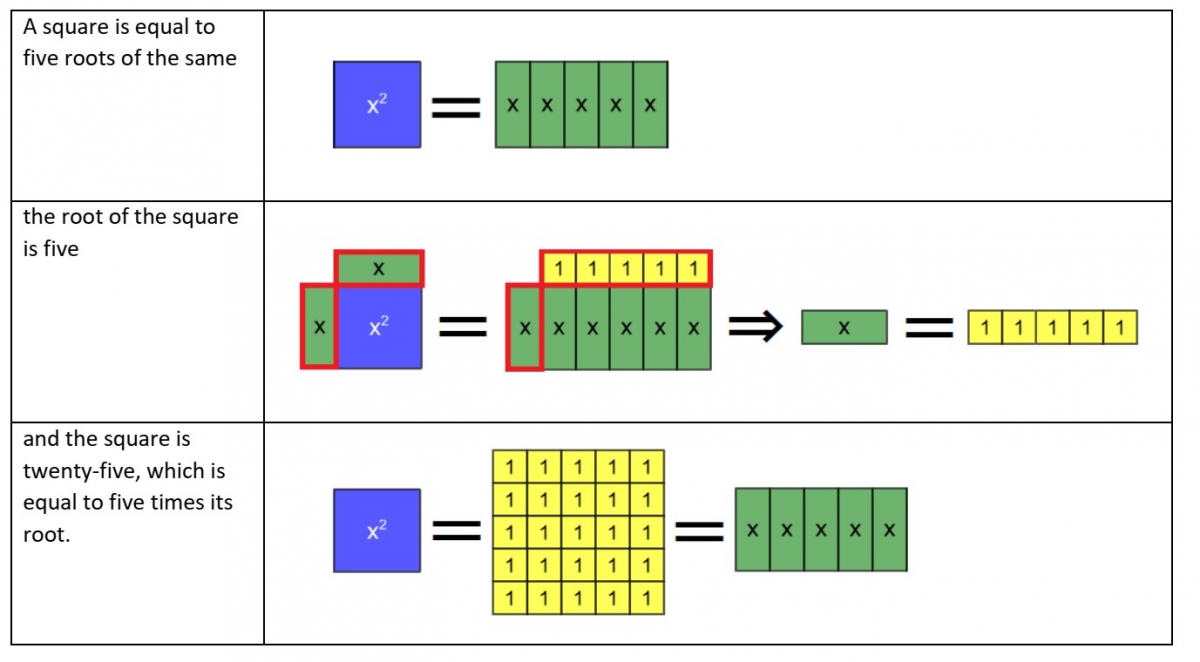
Example 2: Squares are Equal to Numbers (Type 2)
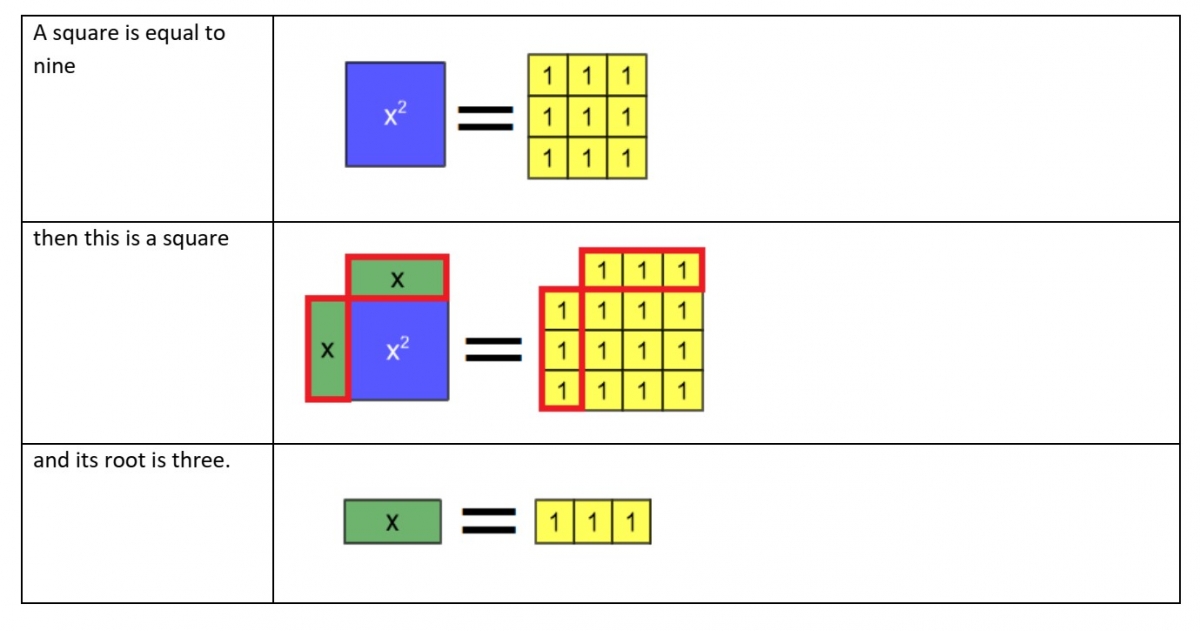
Example 3: Roots are Equal to Numbers (Type 3)
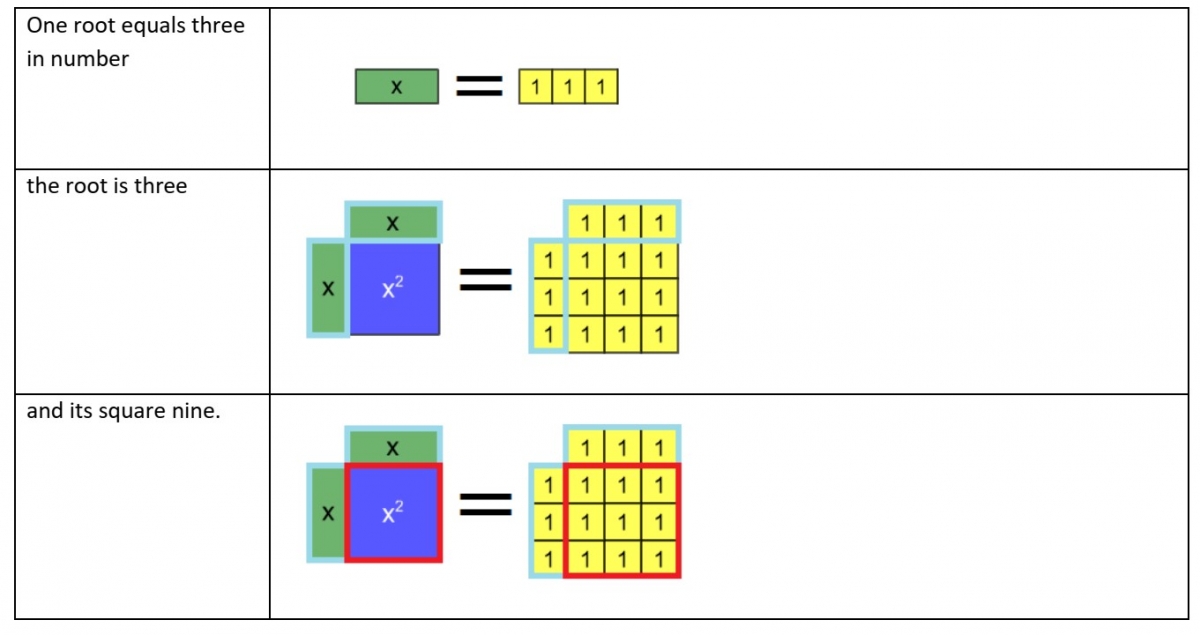
Students may find it interesting that al-Khwārizmī always stated the value of the square, as well as the root, in his examples. This is the case even in Example 3, where the value of the root (x=3) is given in the problem statement.
The three examples above are all associated with monic polynomials. The next two examples illustrate al-Khwārizmī’s procedures for obtaining one entire square “whenever you meet with a multiple or sub-multiple of a square” [Rosen 1831, 13]; that is, the procedure for obtaining a leading coefficient of 1 in a non-monic quadratic equation. As shown in these examples, the squares, roots, and numbers are simultaneously scaled by the same ratio where that ratio is chosen in order to obtain a single square. A similar procedure was used with linear equations (roots = numbers), as is shown in Example 6. While it is relatively straightforward to model this procedure with algebra tiles in the case of multiple squares or roots (Examples 4 and 6), the lack of fractional tiles makes the case of submultiples more complicated to set up (Example 5). In fact, some of al-Khwārizmī’s equations involve fractions in ways that are impossible to represent with algebra tiles, as we describe in our discussion of Example 10 in a later section.
Example 4: Squares are Equal to Roots (Type 1), beginning with a multiple of a square
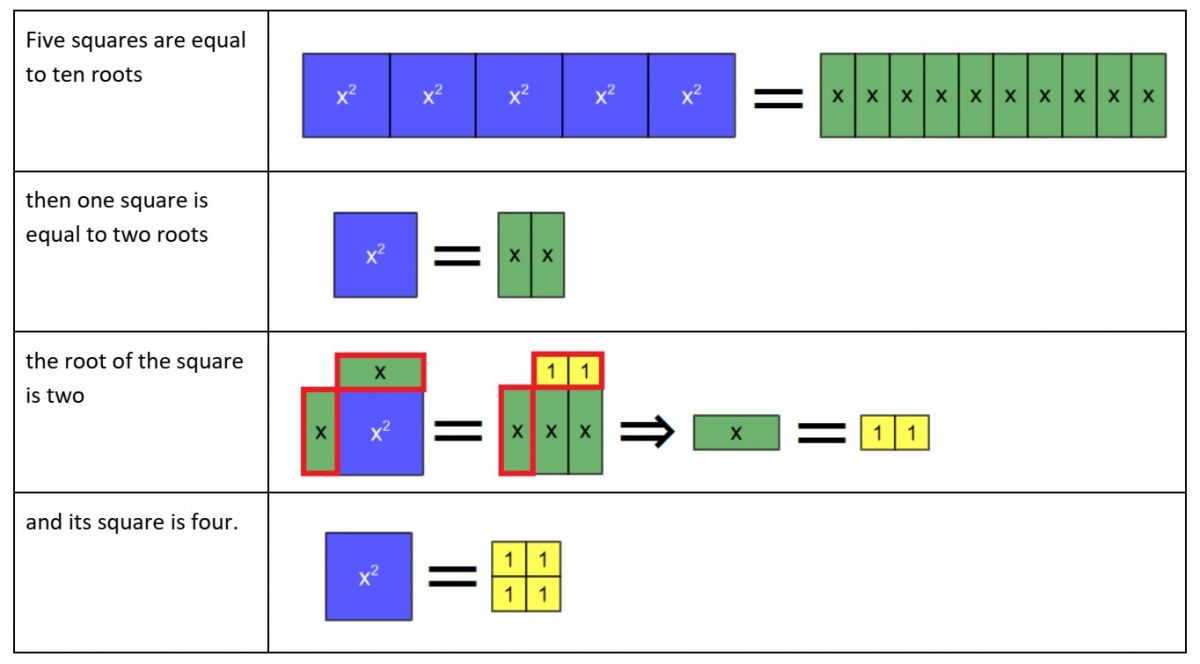
Example 5: Squares are Equal to Numbers (Type 2), beginning with a submultiple of a square
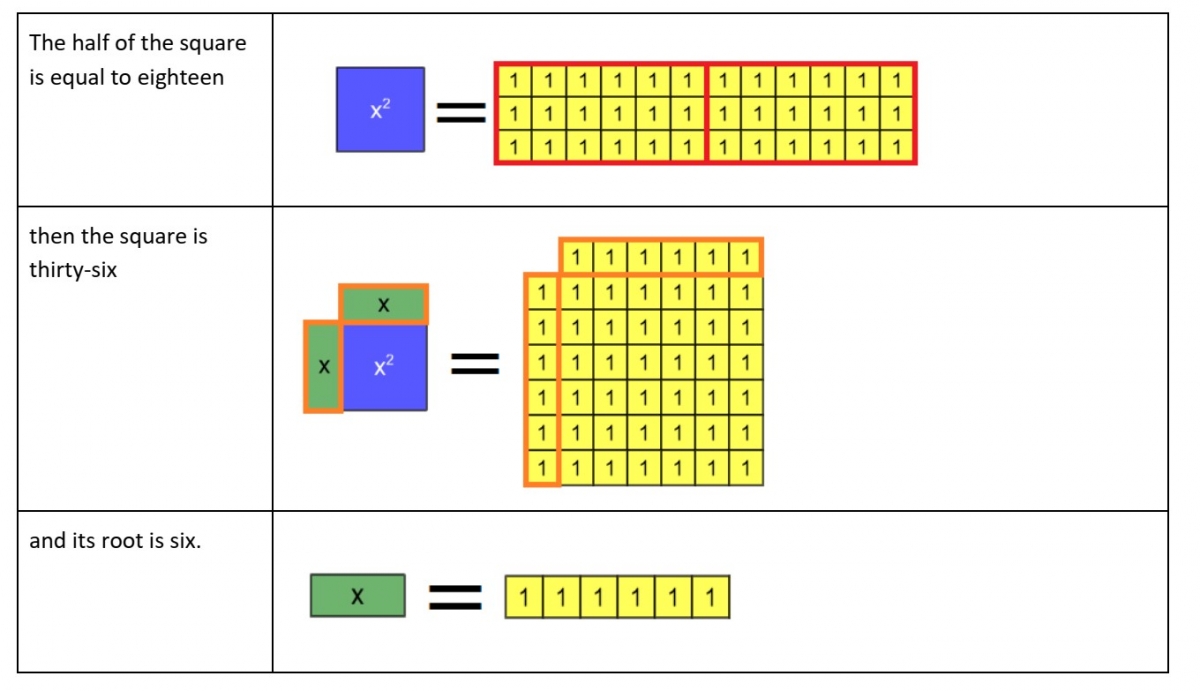
Example 6: Roots are Equal to Numbers (Type 3) , beginning with a multiple of the root
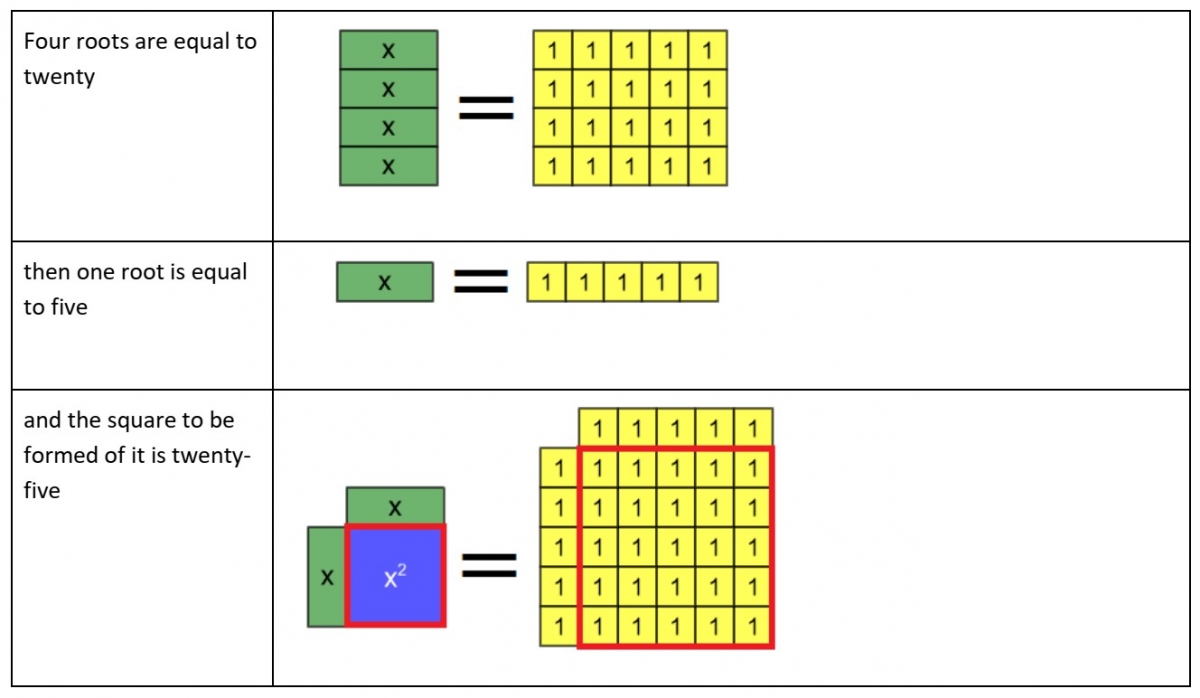
Günhan Caglayan (New Jersey City University), "Algebra Tiles Explorations of al-Khwārizmī ’s Equation Types: Modeling the Simple Equations," Convergence (October 2021)




